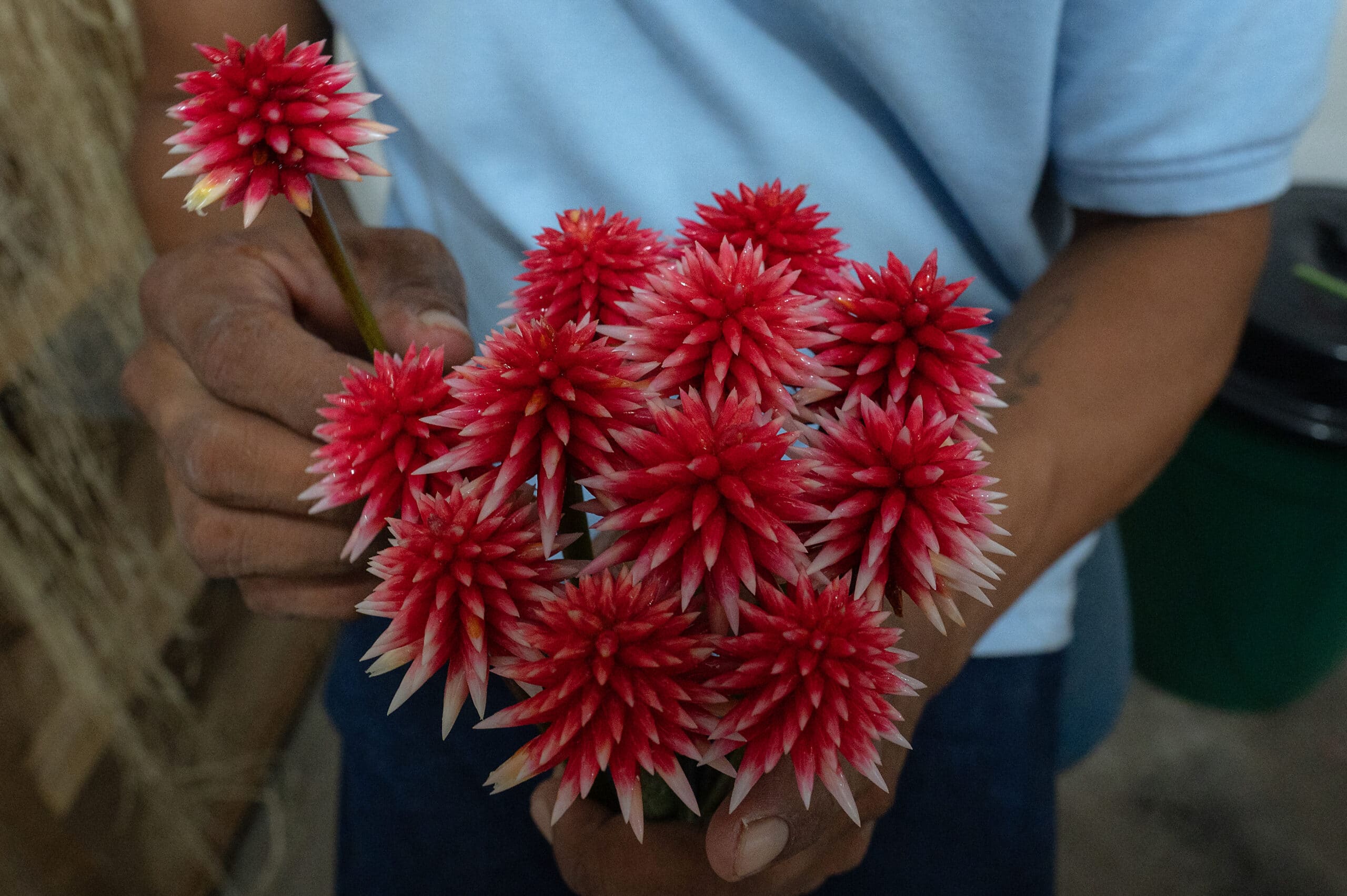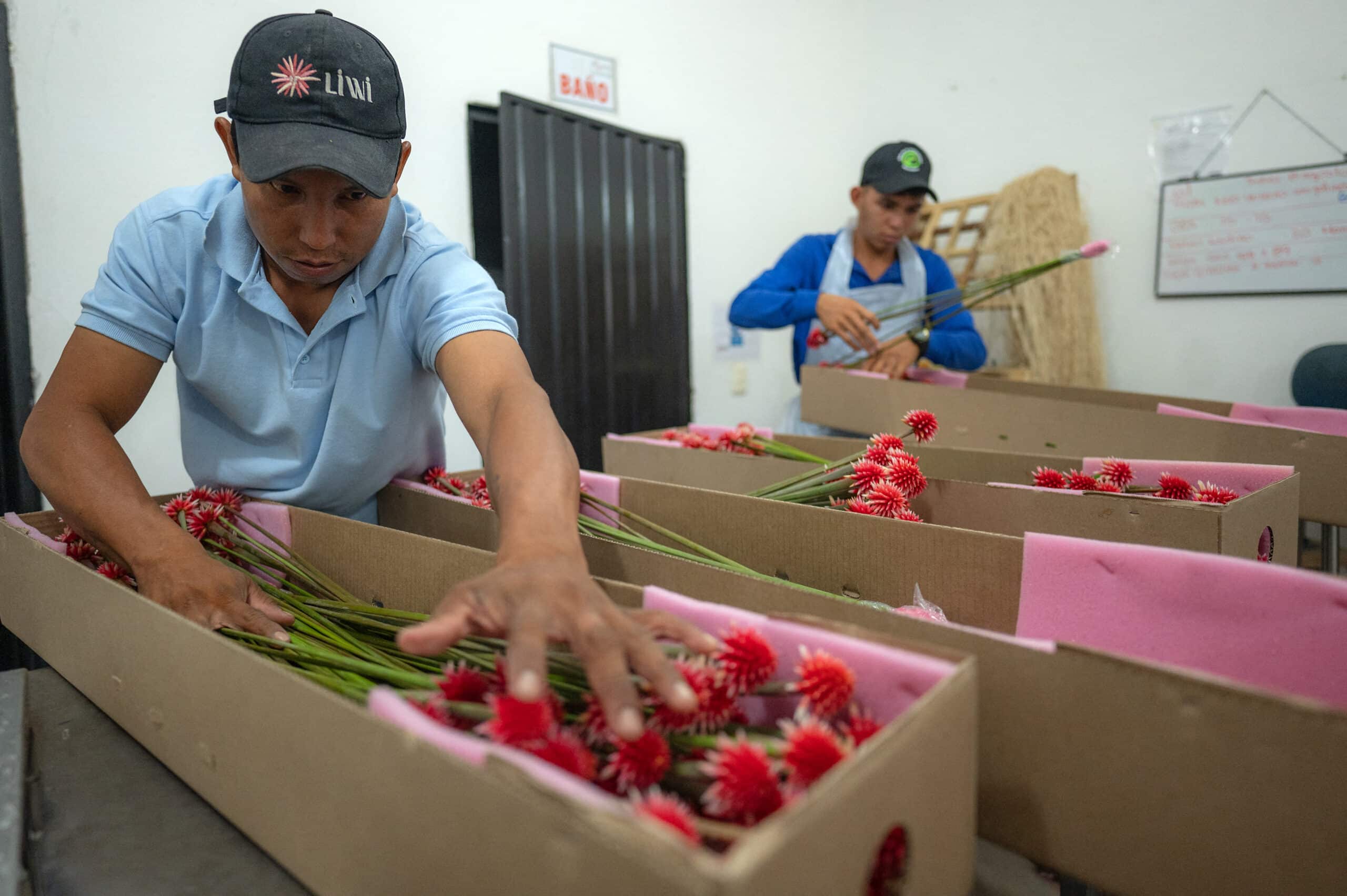Colombia’s Inirida flower: From ‘weed’ to emblem for UN meeting

A worker sorts Inirida flowers (Schoenocephalium teretifolium) before packing them for export in the town of Inirida, department of Guainía, Colombia, on August 07, 2024. (Photo by Luis ACOSTA / Agence France-Presse)
COLOMBIA — When Ruben Dario Carianil began cultivating the unusual, pointy Inirida flower in the Colombian Amazon 10 years ago, his relatives made fun of him for growing “weeds.”
Today, the 63-year-old Carianil, of the Curripako tribe, grows tons of the curious blooms on a plot outside Inirida – the jungle city of 30,000 people from which the flower took its name.
Carianil exports Inirida cuttings to the United States, Europe, and Asia, and soon even more foreigners will be introduced to the rare blossom as the emblem of a UN biodiversity conference to be held in Cali from October 21 to November 1.
“I’m very happy,” Carianil told Agence France-Presse of his success, which he sees as helping, not harming, the environment.
“For us, Nature, the forest, is life. We Indigenous people respect it and we live in harmony with Nature without damaging it.”
Article continues after this advertisementInirida flowers once grew abundantly in the wild in the region. Over-picking led to a dramatic reduction and the government in 1989 prohibited harvesting.
Article continues after this advertisementThe ban remained in place until 2005, when the door was opened for Inirida’s commercial cultivation as long as wild populations remained untouched.
So far, only Carianil’s farm has managed to grow, and get a license to market, the red flowers with their hard, spikey, finger-like petals.
READ: LOOK: Rare Rafflesia blooms in Davao Oriental protected area
He was helped in the domestication process by biologist Mateo Fernandez.
At first, Carianil’s blooms sold at the local airport, then in the Colombian capital Bogota some 700 kilometers (about 430 miles) away, then further afield.
In 2022, the first box of Inirida blooms was delivered to China from Colombia, one of the world’s top flower growers and exporters.
Inirida: ‘Eternal flowers’

Workers pack Inirida flowers (Schoenocephalium teretifolium) for export in the town of Inirida, department of Guainía, Colombia, on August 07, 2024. (Photo by Luis ACOSTA / Agence France-Presse)
Carianil runs the business with his wife Martha Toledo and their children.
On a plot of some 20 hectares (49 acres), the Inirida crops share space with a variety of native shrubs and even a patch of undisturbed forest.
READ: Breakaway bouquets: Where to find the finest flowers and non-floral bouquets this Valentine’s Day
From the air, the farm looks very different from the flower plantations abundant in Colombia’s Andean regions with their rows upon rows of monoculture, often in plastic greenhouses.
Fertilizers and pesticides are banned on Carianil’s farm, and only Indigenous farming methods used.
“When you buy a flower from Inirida, you take a piece of the jungle home with you,” said Toledo.
They call the enterprise “Liwi: Eternal flowers” as the buds retain their shape years after being cut, even when dried.
It is this longevity that inspired the choice of the Inirida as the logo for the 16th meeting of the Conference of Parties (COP16) of the Convention on Biological Diversity.
“This is a flower that never dies, its petals never fall apart. We hope that the COP16 in Colombia can help the world to make peace with Nature, so that we can sustain and maintain life on the planet forever,” says Environment Minister Susana Muhamad.
The flower is native to Colombia’s eastern Guainia department, of which Inirida is the capital, and a part of the neighboring Venezuelan Amazon.